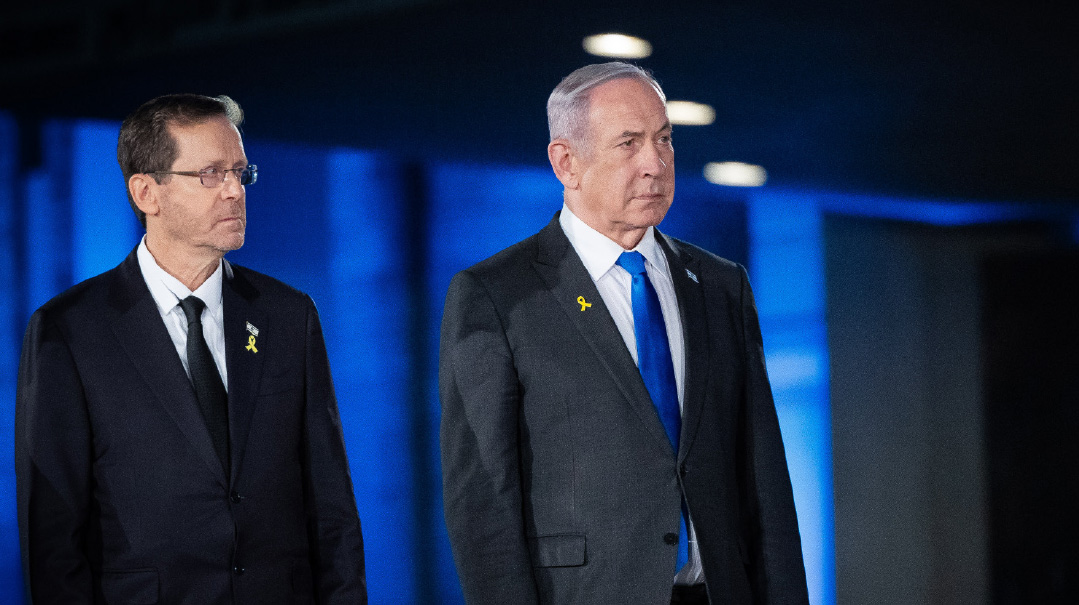Jerusalem: Better Together Than Separate


A nniversaries are worth celebrating when there’s something to celebrate
Next week marks the tenth anniversary of the Annapolis peace conference best forgotten due to Deputy Prime Minister Chaim Ramon’s offer to hand half of Jerusalem to the Palestinian Authority and establish joint Jewish-Muslim sovereignty over Jerusalem’s holy sites.
Back then Zeev Elkin was a freshman Knesset member and his Pisgat Ze’ev home would have ended up a stone’s throw away from the PA under Ramon’s plan.
Elkin decided to have a talk with Ramon asking him if he’d ever been to Pisgat Ze’ev.
“Ramon told me ‘I’m busy I don’t have the time but I know what you’re driving at so just ask me your questions ’ ” Elkin recalls.
“Picture this narrow road ” Elkin continued “with Pisgat Ze’ev and Neve Yaakov on one side and Beit Hanina and the Shuafat refugee camp on the other side. Forty percent of Jerusalem’s Jews live across the Green Line. How do you think they will feel if you divide Jerusalem?”
Ramon replied: “I’m a statesman. The politicians will work out the details.”
“That wasn’t a good answer to my question ” said Elkin who today is chairman of the Likud parliamentary faction while Ramon was chased from politics in 2006 on the heels of a personal scandal.
Elkin retold this story last week at the inaugural conference of the Jerusalem Institute for Strategic Studies (JISS) a new defense and security think tank whose goal is to strengthen a united Jerusalem.
Jerusalem’s boundaries expanded dramatically during a housing boom between the 1967 Six Day War and the 1993 Oslo Accords. While an estimated 350 000 to 400 000 Jews now live in these new neighborhoods many adjacent Arab villages also landed inside the city’s redrawn boundaries.
The time has come to make readjustments said Maj. Gen. (res.) Yaakov Amidror a senior fellow at JISS and former chairman of the National Security Council (2011–2013). “There’s no shame in looking back. If we put a fence in the wrong place let’s move it if it includes areas that don’t contribute to Jerusalem or serve our purpose anymore ” Amidror said.
The “contribution” Amidror diplomatically refers to is Jerusalem’s demographics. Nationally Jews outnumber Arabs in Israel 74%–20% according to the Central Bureau of Statistics. In Jerusalem the Jewish edge is narrower at 62%–36%.
The Greater Jerusalem law under consideration in the Knesset would pad Jerusalem’s Jewish advantage expanding the city’s municipal boundaries to Gush Etzion Beitar Illit Givat Ze’ev and Maaleh Adumim adding some 150 000 Jews to Jerusalem’s population rolls while subtracting 100 000 east Jerusalem Arabs. But Prime Minister Netanyahu has scotched the law pending release of the Trump administration’s peace blueprint.
“Even if we pass the Greater Jerusalem law it’s a one-time event ” Elkin said. “As long as we allow Palestinians free movement into these Arab villages we can still lose our majority.”
As opposed to Ramon’s proposal to place half of Jerusalem under PA control Elkin would jettison some Arab villages within Jerusalem’s current boundaries and reconstitute them as special municipalities — under Israeli rule — although he admits it may not be legal or practical: “But to me this is the right direction. We must extricate ourselves from a complicated situation. There is no quick solution and it’s got to be done carefully and gradually.”
Political Chess: Politically Adrift in London
As Priti Patel rode to 10 Downing Street last Wednesday night to submit her resignation as Britain’s international development secretary to Prime Minister Theresa May I fired off a few e-mails to influential Jewish officials in Britain asking if any of them had come to her defense. Patel’s offense was her failure to report a dozen meetings she held with Israeli politicians and business leaders during her August vacation in Israel including Prime Minister Netanyahu and Gilad Erdan.

My sources told me it was a lost cause: Patel violated a ministerial code and there was no saving her. One source called her resignation a “huge pity” while another assured me that we haven’t heard the last of Priti Patel who wasn’t exactly a household name outside of the UK until last week.
Patel’s parents were Ugandan Indians who fled to the UK in the 1960s after Uganda’s president Idi Amin of Entebbe infamy began expelling people of their ethnic background.
Priti 45 was born in the UK and won a seat in Parliament in 2010. Jews of a conservative political stripe applauded her strong pro-Israel views and her successful efforts to cut 17 million pounds from UK funding to the Palestinian Authority to protest the PA’s payment of stipends to terrorists.
Patel may have broken the rules but her breach of protocol is business as usual for politicians. Back in 1991 Shimon Peres conducted secret talks with the PLO in Norway at a time when it was illegal for Israelis to meet PLO officials. Peres’s efforts led to the Oslo Accords and won him global acclaim plus a Nobel Peace Prize. One can only wonder how Patel might have been feted by the British masses had she met with PA officials instead of Israelis.
Patel’s resignation shook an already weak government with 40 members of Prime Minister May’s own party calling for a vote of no confidence in May’s leadership. If Britain heads to new elections Jews will have much more to fear from the rise of Labour’s Jeremy Corbyn than they will from the fall of Patel or May.
Positive Forces: Man and Machine in Battle Gear
With the Knesset grappling over a new chareidi draft law that will keep the coalition intact and pass the Supreme Court’s muster one IDF division is looking at novel ways of expanding Israel’s fighting force while reducing the need for combat troops.

At the 6th Annual Israel Defense Forces Unmanned Aerial Vehicles Conference held last week in Airport City Brig. Gen. Nir Halamish told some 2000 participants that by 2030 one-third of the IDF’s ground forces could be unmanned according to the Israel Defense weekly.
Halamish head of R&D at the IDF’s Directorate of Defense Research & Development admitted the timetable might be overly optimistic. In 2001 the US government began funding a Future Combat System (FCS) hoping to automate one-third of its armed forces. A wasted decade and $18 billion later it scuttled the project. The RAND Corporation in a 2010 report noted: “The Army did not have a clear grasp of which technologies were feasible and which were necessary and satisfactory to meet the needs of the future.”
Halamish said the IDF hopes to learn from America’s experience. Interoperability will be the key word meaning men and robots will fight together. “It will be a combination of manned and unmanned platforms. In some missions robots will participate. Other missions will be executed entirely by robots ” Halamish said.
Halamish did not launch into specific operational examples but reading between the lines we could see the day when robots not young men scout for underground terror tunnels and unmanned convoys deliver supplies to dangerous areas.
“There are missions today where the weakest link is the human element so we will attempt to remove that element from such missions ” Halamish said. (Originally featured in Mishpacha Issue 685)
Oops! We could not locate your form.













